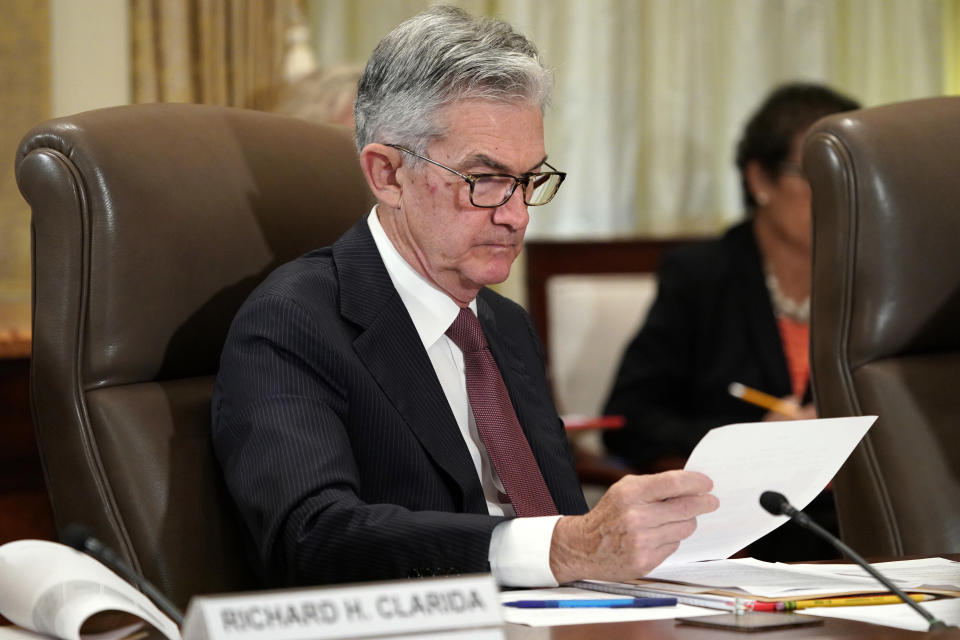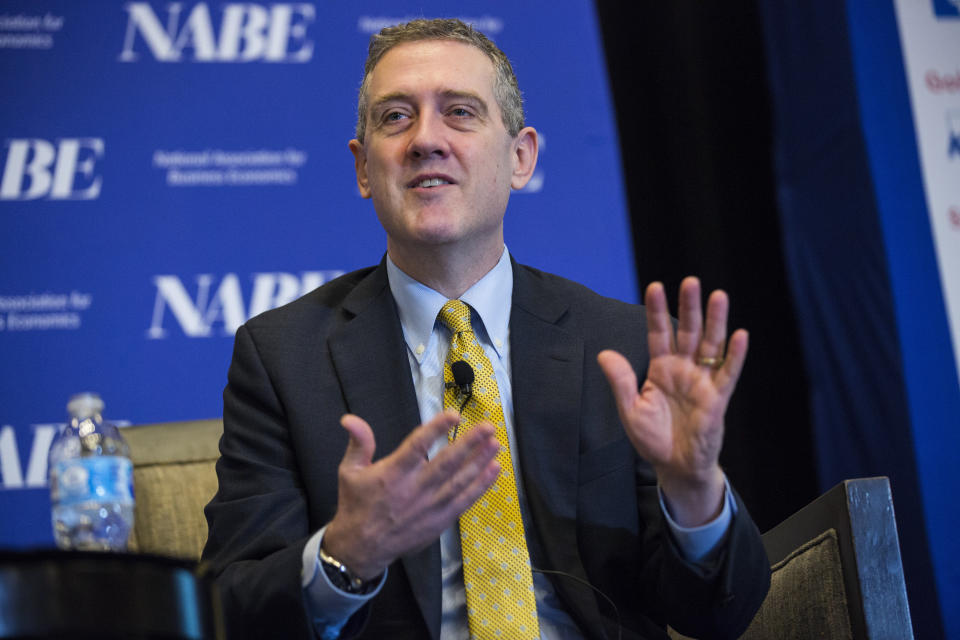Fed holds rate steady, says inflation is 'running below' its target
The Federal Reserve announced May 1 that it is holding the benchmark interest rate steady at a target range of 2.25% to 2.5%, noting that inflation is “running below” its stated target of 2%.
In a technical change, the Fed also reduced the interest it pays on excess reserves parked at the central bank as part of an effort to stop effective interest rates from breaking outside of its current target range.
The Fed’s decision not to change rates affirmed the March meeting’s economic projections signaling no rate changes for the rest of 2019. In that meeting, the Fed said low measures of inflation, concern over global growth, and tightening financial conditions warranted pausing on interest rate hikes while policymakers reassess the data.
The decision also comes as President Donald Trump calls for the Fed to cut rates by as much as 100 basis points.
Economy ‘rose at a solid rate’
The central bank’s statement walked back its March view that the economy had “slowed” from the end of last 2018, noting that recent developments show that economic activity “rose at a solid rate.”

An impressive GDP print released Friday showed the U.S. economy expanding by 3.2% in the first quarter.
The Fed, however, said household spending and business fixed investment “slowed” in the first quarter.
New numbers released Wednesday morning revealed the ISM manufacturing index dipping to a two-year low and construction spending falling amid lower home building.
Inflation remains the Fed’s most challenging puzzle, as strong GDP growth appears out of alignment with price increases. The most recent reading of personal consumption expenditures showed inflation of only 1.5% for March. When stripping out energy and food prices — which the Fed has said is its preferred measure — “core” personal consumption expenditures grew 1.6%, raising an existential question of whether or not the Fed has lost its credibility in getting inflation to its 2% target.
In projections released in its last meeting in March, the median expectation for core PCE for 2019, 2020 and 2021 was 2%.
On employment, the committee repeated its March language describing the labor market as “strong” with job gains remaining “solid.” An estimate-beating jobs report for March appeared to compensate for a weak February.

The decision not to raise rates comes a day after President Donald Trump took to Twitter to urge the Fed to cut rates by 1%, claiming that the economy would go “up like a rocket” if the central bank stopped unwinding its balance sheet in a process called “quantitative tightening.”
The decision to hold rates steady was unanimously agreed upon by the members of the Federal Open Market Committee.
Interest on excess reserves
The Fed also decided to tweak a key lever to its control over interest rates: interest on excess reserves.
As a method of controlling the money supply, the Fed incentivizes banks to park money at the central bank by paying interest on those reserves. The interest rate is within the bounds of the target set in its FOMC meetings, and sets a standard for the interest rate that financial institutions ultimately use to lend out to consumers and businesses in the economy.
By design, when the Fed raises the interest it pays on reserves, it incentivizes banks to leave more money in reserves at the Fed, thus contracting the money supply and notching up the effective interest rates in the market.
In reverse, when the Fed lowers the interest it pays on reserves, it incentivizes banks to leave less money at the Fed, thus expanding the money supply and lowering the effective interest rates in the market.
As of the March meeting, the Fed was paying 2.4% on interest on excess reserves.
The problem is that in recent months the effective federal funds rate has inched toward the top of its target range, raising questions about whether or not the Fed was losing control of effective interest rates. Measures this week showed a spread as narrow as 5 basis points between the effective federal funds rate and the upper range of its target (2.5%).
In its meeting today, the Fed brought interest on excess reserves down to 2.35%.
No updates were announced to the Fed’s efforts to shrink its balance sheet, a process which will slow in May and ultimately end in September.
—
NOTE: This article was originally published on April 28, 2019.
—
Brian Cheung is a reporter covering the banking industry and the intersection of finance and policy for Yahoo Finance. You can follow him on Twitter @bcheungz.
Bank CEOs quiet on M&A ambitions as expectations for consolidation build
Bank investors face a 'conundrum' in an inverting yield curve
St. Louis Fed President on December rate hike: 'It didn't come off very well'
St. Louis Fed President 'hasn't lost confidence' yet in economy
Congress may have accidentally freed nearly all banks from the Volcker Rule

